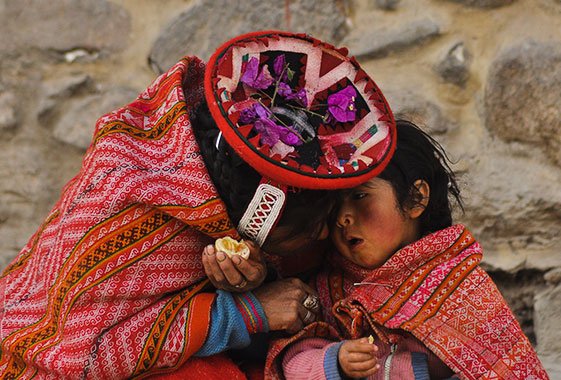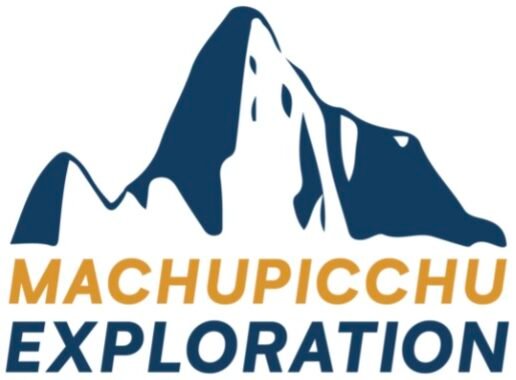
In the rich tapestry of Inca mythology, the legendary figures of Manco Cápac and Mama Ocllo hold a central place, embodying the very essence of creation and the foundation of the Inca civilization. According to tradition, Manco Cápac, often regarded as a divine ruler, and his sister and wife, Mama Ocllo, were sent by the sun god Inti to teach humanity the principles of civilization. Their narratives are steeped in symbolism, representing not only the origins of the Inca people but also the vital connection between the divine and the earthly realm.
Machu Picchu, often referenced in tales that celebrate these iconic founders, serves as a stunning backdrop to the mountain civilization they are said to have brought into existence. This ancient site symbolizes the advanced engineering, agricultural innovations, and harmonious living that flourished under their influence. The travels of Manco Cápac and Mama Ocllo are not merely geographical journeys; they are imbued with profound lessons about governance, social structure, and spiritual beliefs that shaped the Inca way of life.
Mama Ocllo is revered not only as the consort of Manco Cápac but also as a goddess of fertility and motherhood, highlighting the importance of family and communal bonds in Inca society. Together, they are credited with the introduction of essential crops, notably the potato and maize, which played significant roles in sustaining their communities. Furthermore, their teachings laid the groundwork for societal norms, rituals, and practices that endure in contemporary Andean cultures.
Through the lens of these two legendary characters, we gain valuable insight into the cultural foundations and historical significance of the Inca civilization. Their legendary existence invites travelers and enthusiasts alike to embark on a deeper exploration of Machu Picchu, allowing individuals to connect with the myths that continue to shape Andean identity and heritage.
The Mythological Journey of Manco Cápac
Manco Cápac is a prominent figure in Inca mythology, celebrated for his role in the foundational myths of the Inca civilization. According to legend, he emerged from the depths of Lake Titicaca, a sacred site revered by the Andean peoples. This divine origin signifies his status as not merely a mortal leader but a figure of divine lineage, tasked with bringing civilization and order to the region.
As the son of the sun god, Manco Cápac is often portrayed as possessing extraordinary abilities that enabled him to transform the landscapes he traversed. His journey from Lake Titicaca to the establishment of Cusco, the future capital of the Inca Empire, is marked by a series of adventures. It is said that he, alongside his sister and wife Mama Ocllo, shared agricultural knowledge with local communities. This knowledge included the cultivation of maize, potatoes, and other essential crops, which were crucial for the sustenance and growth of the communities in the Andean highlands.
Various legends recount how Manco Cápac faced numerous challenges during his travels. These tales emphasize themes of resilience, leadership, and divine guidance. Upon reaching Cusco, it is believed he united the diverse tribes under a single banner, laying the groundwork for what would eventually become the expansive Inca Empire. Such narratives portray him not only as a conqueror but also as a benevolent leader who instilled social order and fostered an agrarian society.
In contemporary discussions surrounding Machu Picchu and the Inca legacy, Manco Cápac’s role is often referenced as a symbol of unity and cultural prosperity. His mythological journey and influence resonate deeply in the core of Andean identity, making him an exemplar of the Inca spirit as travelers and scholars engage with the rich tapestry of their history.
Mama Ocllo’s Role in the Inca Civilization
Mama Ocllo holds a significant place within the tapestry of Inca mythology, representing not just a figure of reverence but also a vital contributor to the establishment of the Inca civilization alongside her husband, Manco Cápac. This partnership goes beyond traditional views of governance and territorial expansion; it embodies the foundation of societal values, particularly in the fields of agriculture and textile arts. Her influence extended into various aspects of daily life, symbolizing the nurturing and sustaining aspects of society.
As the patroness of agriculture, Mama Ocllo played a crucial role in promoting farming practices among the Inca people. According to legends, she taught them how to cultivate crops efficiently, which enabled the sustenance of large populations within the civilization. This agricultural advancement was pivotal to the development of communities around the sacred sites of Machu Picchu, contributing to the prosperity and stability of the Inca Empire. Her teachings assisted in transforming the once harsh mountainous terrains into arable land, a feat that underscored her importance in Inca society.
Furthermore, Mama Ocllo is credited with the introduction of weaving and textile arts, vital for both functional and ceremonial purposes. The skills she imparted to the women of the empire fostered the development of intricate textiles that played a role in cultural identity and social status. These textiles were not merely clothing; they were expressions of artistry, spirituality, and the harmony between the people and their environment. As a maternal figure of the Inca people, Mama Ocllo symbolizes fertility, nourishment, and the nurturing essence that binds communities together, thus solidifying her legacy in the chronicles of Inca history.
Legacy and Cultural Impact of Manco Cápac and Mama Ocllo
Manco Cápac and Mama Ocllo are revered figures in the history and culture of Peru, particularly within the context of the Inca civilization. Their story, which details the founding of the Inca Empire and the establishment of societal norms, has resonated through generations, showcasing themes of resilience, unity, and cultural pride that continue to be pivotal for contemporary Peruvian society. The legacy of these legendary figures is seen in various facets of modern life, particularly in artistic interpretations, literature, and cultural festivals.
Art plays a significant role in preserving and communicating the narrative of Manco Cápac and Mama Ocllo. Many contemporary artists draw inspiration from their lives, creating paintings, sculptures, and performance art that reflect their contributions to Inca civilization. These artistic expressions serve as a bridge connecting the past with the present, allowing newer generations to appreciate and honor their heritage. Moreover, literary works that explore the tales of these figures enrich the cultural tapestry of Peru, prompting readers to reflect on the values embodied by Manco Cápac and Mama Ocllo, and reinforcing the significance of their legacy in shaping Inca identity.
The cultural impact of these figures also extends to festivals celebrated across Peru. Events that commemorate their legacy foster a sense of community and belonging, allowing individuals to engage with their ancestry and share in the celebration of their historical achievements. Through traditional music, dance, and ritual, the narratives of Manco Cápac and Mama Ocllo are kept alive, ensuring that their stories remain dynamic and relevant in the present day. This enduring influence serves as a testament to their important role in the formation of cultural identity among the Andean people as they continue to embrace their rich heritage amidst the backdrop of modernity.
